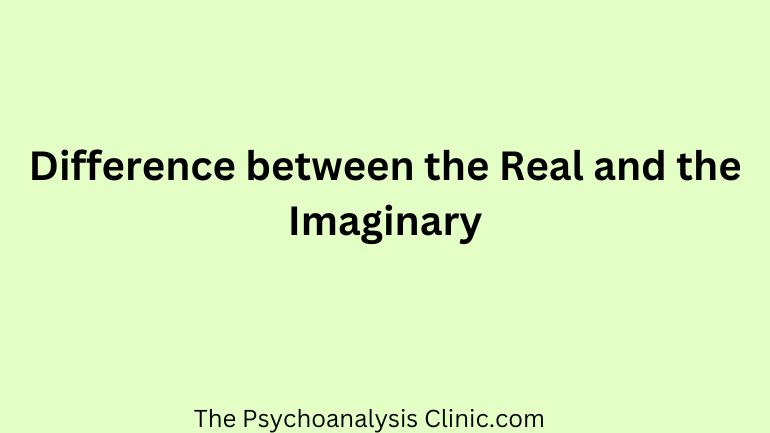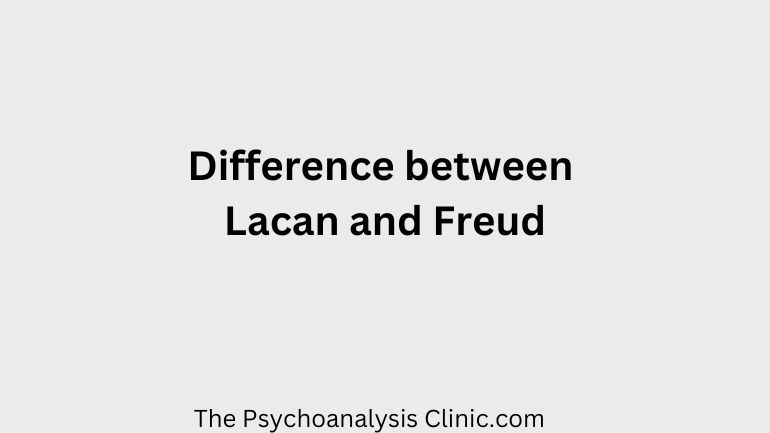Jacques-Marie Émile Lacan

Jacques Lacan was a French psychoanalyst born in Paris in 1901 and died in 1981. He graduated in medicine and specialised in psychiatry between 1927 and 1931, having been a resident at the Sainte-Anne Hospital in Paris.
Lacan is known for reviving the works of Sigmund Freud and for founding his own psychoanalytical current: the Lacanian Psychoanalysis.
What are the major concepts of Lacan?
Lacan’s main ideas include the concept of the unconscious, which he considered to be structured as a language. In addition, he emphasised the importance of language in the development of human identity and in communication between people.
Another important Lacan’s theory is desire, which he saw as a continuous and insatiable process that can never be completely satisfied.
Lacan also developed the concept of object a, which represents an imaginary object that is desired by the subject but it can never be attained or possessed.
He also emphasised the importance of transference in the relationship between the analyst and the patient, as well as the importance of the real, the symbolic and the imaginary in the formation of human identity.
Table of Contents
Jacques Lacan theory
- The unconscious: According to Lacan, the unconscious is not a collection of repressed thoughts or desires, but a discourse or language that is constructed and regulated by the Other (particularly, by cultural and social expectations and demands).
- The division of the subject: it refers to the separation between the self and the ideal of the self. The self is the image we have of ourselves, while the ideal of the self is the model we want to achieve. This splitting generates a lack or dissatisfaction that drives us to seek the object of desire.
- Repetition: it is a process employed to try to overcome lack or loss, for this reason, we constant repeat patterns of behaviour, emotional relationships or traumatic situations. Repetition is an unconscious resistance to change.
- Transference: it is a process in which the patient projects their feelings and emotions onto the therapist. Transference can be positive or negative and allows the analyst to interpret the patient’s unconscious and lead them to the truth of their desire.
- Jouissance: it is a complex concept that refers to the experiences between pleasure and pain. The jouissance is what makes us feel alive, but it also makes us suffer. Lacan distinguishes between the phallic jouissance, the plus-de-jouissance and the jouissance of the Other. The phallic jouissance is linked to the sexual organ and the symbolic law. The plus-de-jouissance is the surplus of jouissance that escapes the law. And the jouissance of the Other is the one that is impossible to achieve.
- The three registers: Lacan developed the “Theory of the Three Registers”: the Imaginary, the Symbolic and the Real. These registers form the structure of the psyche, and explain how the subject relates to himself, to others and to the world.
Lacan Imaginary Stage
The imaginary stage is one of the three registers proposed by Lacan, along with the symbolic and the real. The imaginary is the register that refers to the dimension of the image, perception and illusion.
According to Lacan, the imaginary is a fundamental aspect of human experience, because it is through it that we construct our identity and our relationship with the world.
Lacan argues that the image we have of ourselves is always an incomplete and fragmented one, which never completely corresponds to the reality.
He also emphasises the importance of the language in the formation of human identity and in communication between people.
Lacan Real Stage
The “Real” in Lacanian psychoanalysis is a concept that refers to an experience that cannot be represented or symbolised.
It is a characteristic of human experience that is beyond language and cannot be expressed in words or images.
The Real is often perceived as a lack or emptiness, and it is related to the impossible.
What is the difference between the Real and the Imaginary?

According to Lacan, the “Real” and the “Imaginary” are two distinct concepts.
The Real is a dimension of human experience that cannot be represented or symbolised. It is a lack or a void that resists symbolisation and representation. On the other hand, the Imaginary is derived from perceptual mental processes. It is an aspect of human experience that is related to perception and image.
The Real places the Symbolic and the Imaginary in their respective positions. The Symbolic is derived from culture and language, while the Imaginary is derived from perceptive and imagined mental processes.
Freud and Lacan
The Lacanian psychoanalysis is a different approach from the theory and clinical works of Sigmund Freud.
The Lacanian psychoanalysis, founded by Jacques Lacan, made several changes to the Freudian theorical and clinical style. In 1953, Lacan introduced the theory that “the unconscious is structured as a language”.
Lacan created new concepts, as well as his own analytical method. His distinctive technique arose from a different methodology of analysing Freud’s work.
Its main concepts include the mirror stage, the a-object, transference, the real, the symbolic and the imaginary which has a clinical practice that is somewhat different from Freudian psychoanalysis.
What is the difference between Lacan and Freud?

Sigmund Freud and Jacques Lacan are two of the greatest psychoanalysts in history. Although each of them has a distinct approach, it is possible to identify the nuances of each thinker. Both share similar guidelines regarding human development and behaviour, but with different and personal frameworks.
One of the main differences between Freud’s and Lacan’s theories is the way they conceive the unconscious. For Freud, the unconscious is made up of repressed contents that can be accessed through free association. For Lacan, on the other hand, the unconscious is structured as a language and not as a depository of repressed contents.
Another significant difference between the two psychoanalysts is the way they each conceptualise desire. For Freud, desire is a drive that seeks satisfaction. For Lacan, desire is a continuous and insatiable process that can never be completely satisfied.
Lacan also developed the concept of object a, which represents an imaginary object that is desired by the subject, that can never be reached or possessed.
He also emphasised the importance of transference in the relationship between analyst and patient, as well as the importance of the real, the symbolic and the imaginary in the development of human identity.
Žižek and Lacan

Slavoj Žižek is a Slovenian philosopher who has become known for his interpretations of Jacques Lacan and other thinkers. He is often associated with the Ljubljana School of Psychoanalysis, a group of Slovenian academics working on the German idealism, the Lacanian psychoanalysis, the ideological criticism and media criticism.
Žižek used Lacan’s work to interpret Hegelian and Marxist philosophy. He has also reinvigorated the Lacanian psychoanalytic theory, reading it as a thinker who carries founding modernist commitments to the Cartesian subject and the liberating potential of self-reflexive action and self-transparency.



